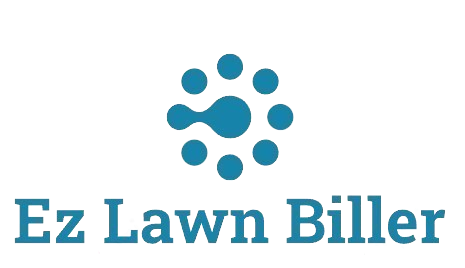Optimize your lawn care business routes to enhance efficiency and customer satisfaction. Discover practical tips and tools to streamline your operations.
How to Optimize Routes for Your Lawn Care Business
In today’s fast-paced world, efficiency is key, especially in the lawn care industry. Optimizing routes for your lawn care business not only saves time and fuel costs but also enhances customer satisfaction through timely service delivery. In this comprehensive guide, we will explore various strategies, tools, and insights that can help you streamline your routing processes, improve your bottom line, and keep your clients happy. Let’s dive into the vital steps you can take to optimize your lawn care business routes effectively.
Effective route optimization is about more than just getting from point A to point B. It involves planning the most efficient path that minimizes travel time and costs while maximizing productivity. By utilizing advanced routing techniques, lawn care businesses can handle more clients, reduce wear and tear on vehicles, and lower fuel expenses. This is particularly crucial for lawn care companies operating in metropolitan areas like Los Angeles, New York City, or Chicago, where traffic congestion can significantly impact service schedules.
Throughout this article, we will cover the essential aspects of route optimization, including the use of technology, mapping tools, and practical tips to enhance operational efficiency. We will also discuss how leveraging lawn billing software can support your business in managing services and tracking performance metrics effectively.
Understanding the Importance of Route Optimization
Route optimization is a critical component of logistics management that directly affects operational efficiency. According to studies, businesses that implement effective routing strategies can save up to 30% on fuel costs. For lawn care companies, this translates to improved profit margins and the ability to allocate resources to other business areas, such as marketing or service expansion.
Moreover, timely service is a hallmark of a successful lawn care business. Customers expect reliable and punctual service, and delays can lead to frustration and lost contracts. By optimizing your routes, you can ensure your teams arrive on time, enhancing customer satisfaction and loyalty.
For example, if your team operates in a city like Houston, where lawns are abundant and competition is fierce, being able to serve a larger number of clients efficiently can give you a significant edge in the market. The right routing strategy can help secure your reputation as a dependable service provider.
Utilizing Technology for Route Planning
One of the most effective ways to optimize your lawn care routes is through the use of technology. A variety of software options are designed to streamline the routing process, and integrating these tools into your operations can lead to substantial improvements.
Many lawn service software applications come equipped with features that allow for efficient route planning. For instance, incorporating GPS technology ensures that you can avoid traffic congestion, road closures, and other obstacles. Applications such as Google Maps or specialized lawn service apps can provide real-time updates and traffic conditions, helping your team make informed decisions on the fly.
Moreover, software solutions like [Lawn Biller Software](https://ezlawnbiller.com/) offer comprehensive features for managing client details, invoicing, and tracking service history. This means you can focus on planning routes while the software takes care of the administrative tasks, allowing for a more integrated operation.
Mapping and Scheduling Best Practices
Once you have the right tools at your disposal, it’s essential to develop a mapping and scheduling strategy that aligns with your business goals. Start by grouping clients based on proximity to reduce travel time between jobs. By clustering services in the same geographical area, you can decrease the time spent on the road.
Additionally, consider scheduling jobs based on traffic patterns and service frequency. For instance, if a client requires weekly mowing services, try to schedule their appointment for the same day and time each week. This not only streamlines logistics but also makes it easier for clients to remember their service days.
Furthermore, don’t forget to account for the size and scope of each job. Longer or more complex jobs may require adjustments to your schedule—it’s essential to leave enough time to ensure quality service. Employing a lawn service computer program can assist in efficiently managing and visualizing your scheduling needs.
Real-Time Adjustments and Flexibility
Route optimization is not a one-time task; it requires continuous monitoring and adjustments. Unexpected issues such as inclement weather or last-minute service requests can disrupt even the best-laid plans. Therefore, it’s crucial to have a strategy for real-time adjustments.
Utilizing a mobile application that syncs with your route planning software allows field workers to receive updates instantly. For instance, if a major storm is expected in Miami, and you have a client scheduled for a fertilization treatment, you can easily reschedule that job and assign another client in a more favorable area.
Communication is also vital in this regard. Establish a reliable line of communication with your team to ensure they are aware of any changes in real time. This flexibility can make all the difference in maintaining customer satisfaction and service quality.
Evaluating Performance Metrics
To understand the effectiveness of your route optimization strategies, it’s essential to track performance metrics. Regularly reviewing your service data can provide insights into areas that need improvement.
Key performance indicators (KPIs) to monitor include fuel costs, service times, customer feedback, and overall job completion rates. Using a report generation feature, like that offered by [Lawn Biller Software](https://ezlawnbiller.com/), can help you analyze these metrics effectively. This data helps you identify trends and adjust your strategies accordingly.
For example, if you notice that a particular route consistently incurs high fuel costs, it may be time to reevaluate the path or the scheduling of those clients. Continuous evaluation fosters a culture of improvement within your business and can drive long-term success.
Best Practices for Route Optimization
Incorporating best practices into your daily operations can enhance your route optimization efforts. Here are some practical tips to get you started:
- Regularly update your client database to reflect changes in service needs or locations.
- Utilize customer feedback to assess satisfaction levels and adjust service schedules if needed.
- Invest in employee training to ensure your team is adept at using routing software and understands the importance of efficiency.
- Explore multiple routing options before finalizing a route to determine the best approach.
- Incorporate downtime for your equipment and staff to ensure optimal performance during peak seasons.
These practices, combined with effective software solutions, can optimize your routing processes and ensure you remain competitive in an ever-evolving market.
City-Specific Considerations for Lawn Care Routing
Operating in different cities can introduce unique challenges and opportunities for route optimization. Let’s explore some city-specific considerations that can help your lawn care business thrive.
Los Angeles
In a sprawling metropolis like Los Angeles, traffic is a significant factor to consider. Lawn care businesses must account for rush hour traffic patterns, especially in areas like Downtown LA and the Westside. Utilizing route optimization software that factors in real-time traffic conditions can help you avoid delays and improve service punctuality.
Additionally, Los Angeles has diverse neighborhoods with varying client needs. By creating tailored service packages that align with each neighborhood’s preferences, you can enhance customer satisfaction. For instance, eco-conscious neighborhoods may appreciate organic lawn treatments, allowing you to market specialized services effectively.
Chicago
In Chicago, seasonal changes play a crucial role in lawn care scheduling. With heavy winters, many lawn care businesses experience a significant drop in service demand during colder months. Route optimization during peak seasons becomes critical in maximizing service delivery and revenue.
Consider establishing a proactive marketing strategy to maintain client engagement during the off-seasons. Offering winter services, such as snow removal or holiday lighting installation, can keep your teams busy and ensure steady income throughout the year.
Miami
Miami’s tropical climate brings its own set of challenges and opportunities. High humidity and frequent rain can lead to rapid lawn growth, necessitating more frequent service visits. Implementing a flexible scheduling system that allows for last-minute adjustments can help you manage service requests effectively and accommodate client needs.
Moreover, marketing to seasonal residents who may require lawn care during specific months can provide a lucrative avenue for growth. Understanding the local dynamics and leveraging them in your routing strategy can set your lawn care business apart from competitors.
New York City
New York City’s unique urban landscape poses distinct routing challenges. Limited parking and heavy traffic can hinder efficient service delivery. Utilizing a lawn company app that allows your teams to navigate the congested streets efficiently can make a considerable difference.
Exploring partnerships with local businesses or residential complexes can also streamline your operations. By establishing long-term service agreements with these entities, you can create predictable routes that maximize your workforce’s efficiency.
Conclusion
Optimizing routes for your lawn care business is a multifaceted process that requires careful planning and execution. By leveraging technology, adopting best practices, and understanding city-specific dynamics, businesses can enhance operational efficiency and improve customer satisfaction.
As you consider implementing these strategies, remember that the ultimate goal is to create a streamlined operation that allows your team to focus on what they do best—delivering exceptional lawn care services. Investing in tools such as [Lawn Biller Software](https://ezlawnbiller.com/) can further support your efforts, ensuring you manage client relationships and billing efficiently.
In conclusion, the lawn care industry is competitive, and optimizing your routing processes can give you the edge you need to succeed. Start today by evaluating your current strategies, and take actionable steps toward more efficient routing, ensuring your business thrives in the months to come.




